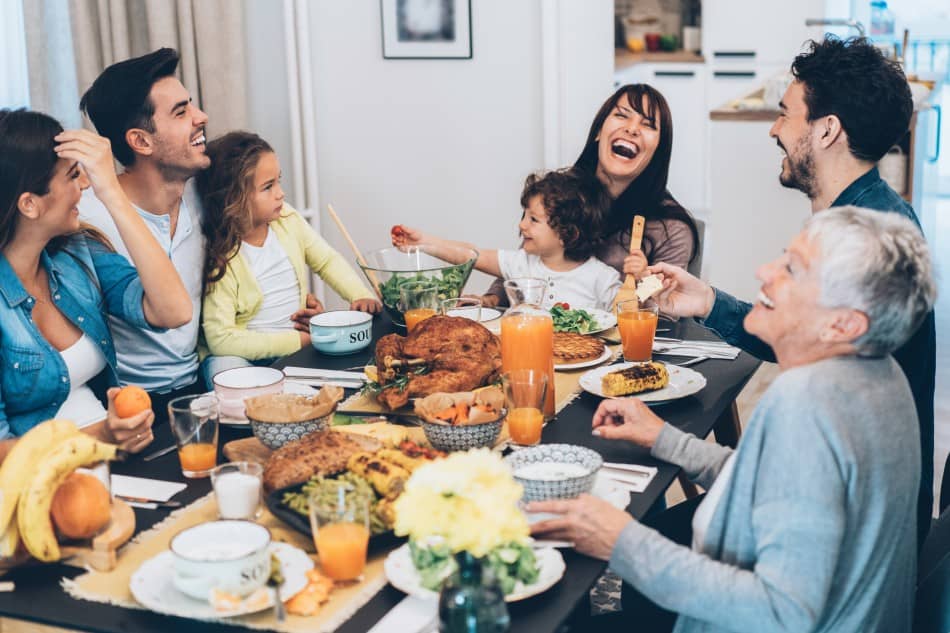Nestled between the candy extravaganza that is Halloween and the gift-giving bonanza of the holiday season is the relatively quieter and quaint holiday of Thanksgiving.
Thanksgiving as a holiday is like a gift unto itself. It’s a day with family and friends (and food!) at the center. But perhaps most importantly, it’s one day of the year when we sit back and take stock in what we are thankful for. Showing gratitude, and teaching kids why it’s important to be thankful and how they can do that, is a powerful lesson.
Expressing Thanks is a Powerful Emotion
An attitude of gratitude is not just a great saying – expressing thanks can lead to powerful payoffs. We know how good it feels to say “thank you” to someone who has helped us out, or how it feels when we help someone else. The benefits of gratitude can go deeper than that. Some research suggests that acknowledging things we are grateful for is associated with greater overall happiness, and may even link to feelings of improved sleep and reduced feelings of depression and anxiety.
7 Ways to Give Thanks at Thanksgiving – and Year-Round
Being thankful and expressing gratitude should be a year-round activity, but Thanksgiving is a time to give extra consideration into what we are glad we have. Here are some ways that you and your family can cultivate a sense of gratitude and make some new traditions, both during the Thanksgiving season and throughout the year:
-
Say it out loud. Have everyone seated around your Thanksgiving table have a turn saying what they are thankful for. This can be repeated at every eating occasion, not just at Thanksgiving. Some families go around the dinner table sharing a rose, thorn and bud from their day: a rose is something that made them happy; a thorn was something challenging or not-so-great; and a bud is something they learned. It’s a great conversation-starter and helpful prompt for reflecting.
-
Write it down. Too shy to express your feelings to a group? Kids and adults alike can benefit from writing down what they’re thankful for on a post-it note and sticking it to the wall as a reminder. Write as many things as you want. It’s fun to read other people’s gratitude, and to see the wall get filled up with colorful pieces of paper.
-
Make a gratitude garland. Instead of post-it notes, cut strips of colorful paper for people at your Thanksgiving table to write down what they’re thankful for. Loop them together and see how far your gratitude will go. You can make this a year-round affair by continuing the gratitude chain and starting a fresh one each Thanksgiving.
-
Keep a gratitude journal. Sometimes what we’re thankful for doesn’t need to be shared with others, and that’s OK. Set aside time for your kids and you to jot down notes or items that made each of you happy that day. A good time to do that is at the end of the day. Simply reflecting on what makes you grateful and writing it down so you can look back on it is enough to foster those feel-good emotions.
-
Encourage a daily “thank you.” Model the behavior you want to see in your kids by publicly and daily thanking them for something specific, like: “Thank you for doing your homework without me reminding you first;” or, “Thank you for smiling at me just now.” Always acknowledge and thank behaviors that you want your child to continue, as that’s great motivation!
-
Thank someone else in an unexpected way. It feels good to do good. Why not find someone who may benefit from a pick-me-up and reach out to them. Have your child write a thank-you note to a favorite teacher or coach, or give a fresh batch of cookies to a neighbor for no reason other than to make their day.
-
Do an act of service. Helping others in need is one way to help children take stock in what they have themselves. Find a program in your area that you can do as a family, whether it’s volunteering at a soup kitchen, fulfilling a family’s holiday wish list, or playing music at a senior center.
Stay up to date with our Insights!
